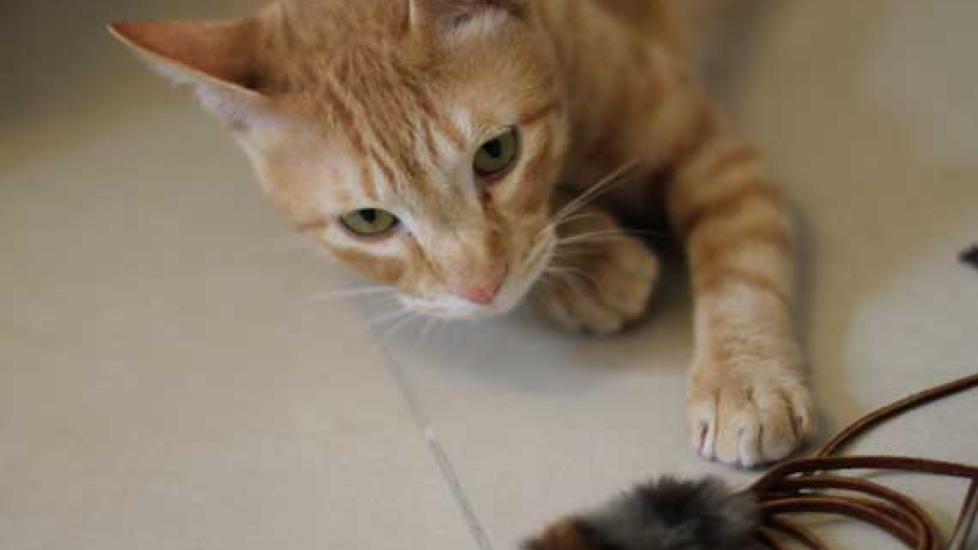Improve Your Cats' Health By Letting Them 'Hunt' for Food
Last updated on April 15, 2016
I believe the biggest problems most cats face today are boredom, inactivity, and obesity. Think about it. We’ve taken a species whose ancestors spent countless hours each day procuring enough food to survive and moved them indoors with near continuous access to food that doesn’t try to escape from them. Is it any wonder so many cats are fat and a touch neurotic?
The solution to these interrelated problems lies in promoting the activity that every cat enjoys — hunting. No, I’m not advocating that we all let our cats outdoors (local wildlife would not be appreciative) or introduce a mischief of mice into our homes, but we can make some simple changes that support a cat’s natural inclination to hunt.
1. Have Several Feeding Stations
Make your cat move to get his or her food. Divide meals into multiple small servings and place them around your home. If your cat has no issues with mobility, you can get creative by placing food in places that require using the stairs, jumping, climbing, etc.
2. Feed Multiple Meals Throughout the Day
When cats are left to their own devices (think the “mouser” at the barn) they eat 8-10 small meals per day. While that number would be difficult to reach for most owners, even increasing the number of meals from two to four can have a significant beneficial effect. To avoid over feeding, place the amount to be fed that day in a container (include treats too) and make sure everyone in the house knows that when the container is empty, “Fluffy” is done for the day.
3. Buy Puzzle Feeders
A quick online search reveals all different sorts of puzzle feeders designed for cats. You can find many variations on the kibble-loaded ball with holes that dispense food as it is rolled across the floor, but more elaborate puzzle feeders are also available, including contraptions made with tubes of various heights or numerous compartments that have to be reached into or opened to get a small meal. Rotating through different types of puzzle feeders will keep a cat’s interest piqued.
4. Make Your Own Puzzle Feeders
If you’re handy with an x-acto knife and glue gun, making your own puzzle feeders will be a breeze. Plans are widely available online, but your imagination combined with knowledge of your cat’s likes and dislikes can make your own design the most rewarding option. Puzzle feeders should be challenging but still offer up food rewards frequently enough to prevent cats from becoming frustrated.
5. Play Hunting Games with Your Cat
Teach your cat a trick like fetch the cotton swab and reward him with treats, or while your cat watches, place a few pieces of kibble on the floor and cover them with a thin cloth. What does she do when you slowly drag the cloth across the floor or quickly flick it away?
Cats need to “hunt” to stay mentally and physically sharp. With a little creativity, owners can find simple ways to support this normal cat behavior and ward off boredom, inactivity and obesity.
